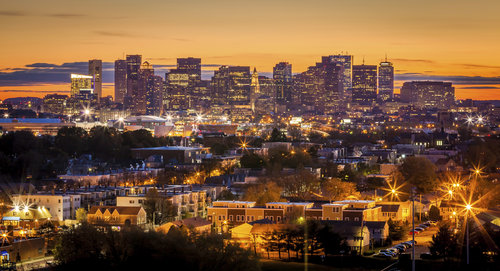For years, Allston-Brighton has been the hip epicenter of college life in Boston, with proximity to Boston College, Boston University and a new Harvard University campus that’s set to open in 2020.
The neighborhoods have every marking of a young, vibrant microcosm: Small businesses, trendy but inexpensive restaurants, hip bars and music venues, colorful murals. And, like many neighborhoods around the country, those exact qualities have it poised for massive transformation driven by potential homebuyers who seek affordability and vibrancy.
In Allston-Brighton, changes seem to be happening quickly. In May, the neighborhood got its first commuter rail station in 55 years to serve Boston Landing, a 15-acre, 2.15-million-square-foot mixed-use development from New Balance, which also is headquartered there.
According to Christina DiNardi, an agent with Keller Williams Realty Boston-Metro, a number of factors make Allston-Brighton attractive for potential buyers. First, many young couples who may have moved to the area for the short term — either while they attended school or saved up money to move elsewhere — fall in love with the location and want to stay there long term. Secondly, buyers who are being pushed out of other, more costly neighborhoods set their sites on more affordable locations.
“Lack of inventory and increased prices are pushing buyers out of other neighborhoods throughout city they wished to consider,” DiNardi said. “Over these past few years with sales prices on a steep incline, previously ‘affordable’ neighborhoods for those with a modest budget have become unaffordable, and Allston and Brighton offer a more reasonable price point.”
For example, DiNardi said that in 2013, she had a listing in Allston-Brighton that went for $20,000 over the asking price. That same listing sold again this year for $215,000 more than the 2013 sales price. That one listing had six offers, and every offer letter explained that while the couple in question didn’t have children now, they wanted to start their family while living in the property.
Harvard joins housing efforts
Potential buyers in Allston-Brighton may have noticed a trend in which developers will offer all cash for homes, which they then divide into individual rental units. This is edging out renters who want to become owners but can’t out-muscle big developers with deep pockets.
To combat this, a number of initiatives are helping owners buy homes, including Harvard University, which set aside $3 million for its All Bright Homeownership Program. With the program, the university buys homes in the neighborhood to resell them to buyers with a key condition: they must have an owner-occupancy deed restriction, meaning they must live on the property, according to The Crimson. This will prevent big developers and management companies from throwing money at a property without personal investment to the community.
Will renters be restricted?
Renters of hip, affordable neighborhoods often feel the squeeze of gentrification more acutely than others. Without a permanent stake in the neighborhood, their wants and needs are often brushed aside. However, DiNardi doesn’t foresee that happening in Allston-Brighton.
“I believe the quality of life for the college students should increase with so many desirable local destinations, and so long as rents stay flat — they have been for the past few years — and inventory of rentals stay high, they should be able to remain and enjoy the area,” she said. “They may just find themselves eating along side a 2-year-old in their favorite restaurant more often than they’d expected!”

